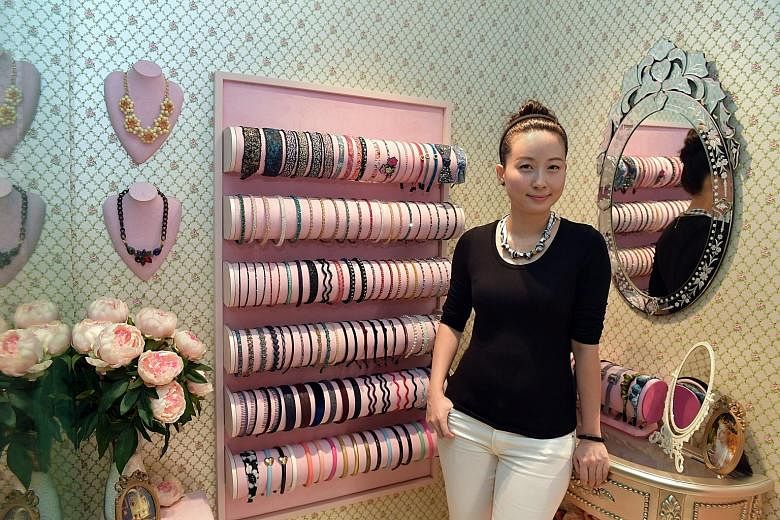Lifestyle store Megafash gives its Suntec City outlet a makeover every month to get office workers in the vicinity to visit the place regularly.
Accessories store Pivoine posts photographs of its upcoming collections on Facebook to drum up hype before they are launched, drawing customers from as far as Yishun to its store at One Raffles Place.
They are among a group of retailers who are beating the retail slump in their own way, whether it is by offering unique products, personalised service or experiential concepts.
"At Suntec, we get a recurring crowd of office workers. So we change the store's layout every month to give them a reason to come in again," said Megafash founder Ngeow Jiawen, 29.
Shelves are moved around and new brands are added, while poor- performing products are moved to other stores.
"High rents and a manpower shortage are things which retailers in Singapore just have to live with," said Ms Ngeow.
"We focus not on cutting costs, but on the consumer and how to get more sales. We can't depend on the mall alone to get traffic."
Besides sourcing unique products to sell, Ms Ngeow occasionally holds pop-up events at her stores, at which her suppliers share information about their products and customers take part in activities such as keychain-making.
Prices at the store range from $2.90 for cards to around $700 for furniture such as sofas. In the past two years, Megafash has grown from an online store to seven bricks-and-mortar shops. Its annualised gross merchandise sales for last year was reportedly $8 million.
Ms Ngeow estimates that 20 per cent to 30 per cent of Megafash's sales come from the online store.
Last September, Minister for Trade and Industry (Industry) S. Iswaran called on retailers to transform their businesses - such as by using online channels and engaging shoppers via mobile applications - to help them stay relevant.
Pivoine, which operates largely through a bricks-and-mortar store, uses Facebook as a free marketing platform. Founder Grace Lee, 39, posts pictures of soon-to-be-launched accessories to first drum up interest among her small but loyal following.
On a good day, she can sell 40 to 50 pieces of accessories such as necklaces, bracelets and earrings, which she sources mainly from Seoul in South Korea.
Ms Lee, who originally signed up to a three-year shop lease, has extended it and hopes to launch an online store by August.
She would say only that her business "is doing quite all right".
She added: "We are active on Facebook and launch new items every week. My products are unique, handmade and not mass-produced - there are limited pieces per design. That's the draw."
Meanwhile, multi-label footwear store Carl & Oak is banking on niche, customised products to draw customers. It sells about 140 pairs of shoes a month and sales of its men's shoes, in particular, have been growing by 20 per cent year-on-year.
The three-year-old store at One Raffles Place has a range of women's footwear with specially made cushions for a more comfortable fit, said co-founder Carl Huang, 31.
From next month, it will start accepting orders for custom-made shoes. Mr Huang said: "I believe that offering reasonable pricing as well as curating and offering unique products and services is key... so we don't rely too much on walk-ins, but rather on regulars and people who find us via the Internet."


